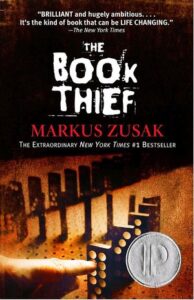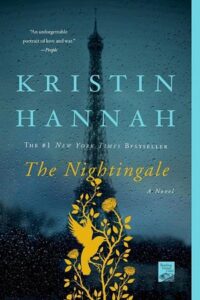



The above is a daunting title, but LISTS always draw me. So I took a look.
WHAT I HAD READ
Out of the 100 books listed, I had read 32…and there were two I did not finish: THE CORRECTIONS, Franzen; LIFE AFTER LIFE, Atkinson. No offense to the authors, but brevity can be a source of wit.
Also, there were quite a few that inspired me to write a blog post: HAMNET, Maggie O’Farrell; JAMES, Percival Everett; OLIVE KITTERIDGE: Elizabeth Strout; EDUCATED: Tara Westover; THE UNDERGROUND RAILROAD: Colson Whitehead; SMALL THINGS LIKE THESE: Claire Keegan; THE IMMORTAL LIFE OF HENRIETTA LACKS: Rebecca Skloot; TOM LAKE: Ann Patchett; WHEN BREATH BECOMES AIR: Paul Kalanithi, and THE VANISHING HALF: Bret Bennett.
There were also a few I just couldn’t get INTO, more than it being the work itself, the writer’s talent. And there were others, that after reading reviews, discussion, I clipped their ideas for a broader look, that often became included in a blog post on the same subject matter: EDUCATED: Tera Westover; THE WARMTH OF OTHER SUNS, Isabel Wilkerson; BETWEEN THE WORLD AND ME, Ta-Nehisi Coates; THE YEAR OF MAGICAL THINKING, Joan Didion.

But finally there is: WHEN BREATH BECOMES AIR, by Paul Kalanithi. This is a book of ideas, the beauty of the message being one we all could benefit from. As a woman who became fascinated by human biology, and thus after giving birth and raising three children, went back to school to study Human Anatomy and Physiology, to take a Cadaver class, finally earn my RN and work at a major inner-city Chicago hospital…the human body we all dwell in, and take advantage of…will forever speak to me.
So I’m sharing some of Kalanithi’s work with you. Thus he writes:
LOVE OF LIFE
“In anatomy lab, we objectified the dead, literally reducing them to organs, tissues, nerves, muscles. On that first day, you simply could not deny the humanity of the corpse . . . Anatomy lab, in the end, becomes less a violation of the sacred, and more something that interferes with happy hour, and that realization discomfits. In our rare reflective moments, we were all silently apologizing to our cadavers, not because we sensed the transgression but because we did not.” (I found this fascinating.)
Because all of us, when at the doctor’s office or in the hospital…have felt a transformation from human being, to BODY AS OBJECT. It is not intended. We love our pets, our cars, our gardens…but when veterinarians, mechanics and gardeners work on them…the same thing happens…to some degree.
UNDERSTANDING OUR HUMAN LIMITATIONS:
“As a resident, my highest ideal was not saving lives—everyone dies eventually—but guiding a patient or family to an understanding of death or illness.”
This statement, of course, is related to the individual patient. So many of us go into the hospital, but later are discharged back to our healthy lives. BUT…
DOCTORS CAN ALSO BECOME AWARE OF THEIR MORTALITY; Paul’s doctor friend writes:
“I recall the sun filtering through the magnolia tree outside my office and lighting this scene: Paul seated before me, his beautiful hands exceedingly still, his prophet’s beard full, those dark eyes taking the measure of me . . . I remember thinking ‘You must remember this,’ because what was falling on my retina was precious. And because, in the context of Paul’s diagnosis, I became aware of not just his mortality but my own.”
PAUL, A DOCTOR, WHO THEN BECAME A PATIENT…HIS MESSAGE:
“When you come to one of the many moments in life when you must give an account of yourself, provide a ledger of what you have been, and done, and meant to the world, do not, I pray, discount that you filled a dying man’s days with a sated joy, a joy unknown to me in all my prior years, a joy that does not hunger for more and more, but rests, satisfied. In this time, right now, that is an enormous thing.”
“Being with patients in these moments certainly had its emotional cost, but it also had its rewards. I don’t think I ever spent a minute of any day wondering why I did this work (being a doctor), or whether it was worth it.”
“Human knowledge is never contained in one person. It grows from the relationships we create between each other and the world, and still it is never complete.”
What have you read lately….reading is so much a part of LIFE!!

4 Responses
Oops – I tried to access the NY Times website but they want you either to subscribe or set up a “free” account. I had a one year subscription in 2023 and didn’t choose to renew it – oh well. There are more than one “best books” that became DNR for me, for one reason or another. I am really curious to see that list!
No worried Alana…I hope that my list might tweet your memory.There are many ways to discover what is being read and what people
are saying about it. Beth
Looks wonderful. I’ll check out “When Breath becomes air” and also the Times list. I also saw that in the paper and felt a little overwhelmed. So many books. So little time! But must keep going.
Thanks, Laurie. I think we can use lists like this as a guide. We can also help each other by spreading the word about great books to read.
Love your posts, Beth